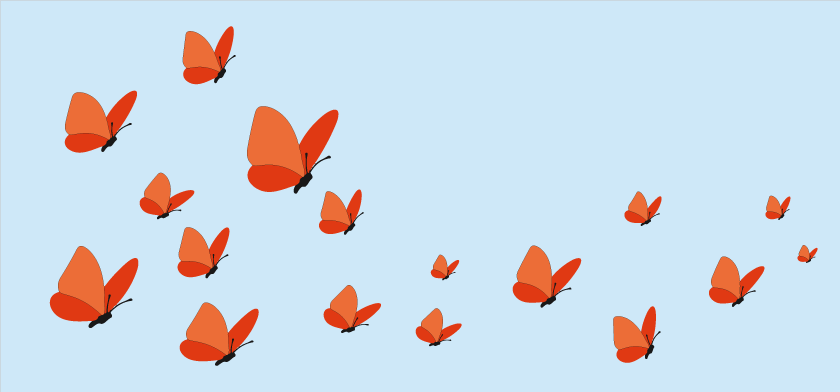Two different legends deal with the origin of Villagrande. One says that the first huts were created by some shepherds from nearby Talana, while another claims that the founders were some shepherds from Desulo who, after crossing the Gennargentu, decided to settle there.
However, the whole area must have been inhabited as early as the third millennium BC. Evidence of this is provided by numerous Nuragic and pre-Nuragic finds in the area.
The area, is rich in archaeological sites: domus de janas at "Coile Brujau," "su Strumpu," "s'Orciada" and "su Settili," a menhir at "sa Preda 'e s'Orcu," while the archaeological area of "sa Carcaredda" includes four Giants' tombs, a rare antis temple and a village.
The best-known Nuragic site is "s'Arcu 'e is Forros," a village-sanctuary, probably the most important metallurgical center in Nuragic Sardinia. It is a complex consisting of a megaron temple, about 17 meters long, surrounded by an enclosure and other cult and habitation buildings, including actual metal smelting workshops. A complex nuraghe with a trilobate plan is also located nearby.
Villagrande's patron saint is St. Gabriel and is celebrated on August 1, but the most heartfelt feast for Villagrande's people is that in honor of St. Barbara, a country festival that takes place partly in the forest dedicated to the saint, where in fact the small church named after her is located, and is celebrated on the second Sunday in July. On Saturday evening, the eve of the feast, known as "Su esperu," the statue of the saint is "accompanied" to the small country church in a very evocative procession: the first to parade are the costumed horsemen, followed by the folk groups of Villagrande, some guest groups, then the saint, accompanied by the "obrieri" and placed on a cart pulled by oxen. "is goccios," prose verses recounting the life of the Martyr, are sung, interrupted only by the sound of launeddas and the prayers of the faithful.
Villagrande Strisaili is a town in central-eastern Ogliastra, nestled among the scents of the Mediterranean scrub, the crisp mountain air and that of the sea. It is located about 700 meters above sea level, in a natural and unspoiled setting, with centuries-old forests, clear water springs and a spectacular view of the Gulf of Arbatax.
It enjoys a happy geographical location, perched high in the mountains, about 700 m. asl. and just a few minutes' drive from the enchanting eastern coastline. A few kilometers from Villagrande, at the center of a plateau, lies the hamlet of Villanova Strisaili, with the wildest natural treasures: the Flumendosa Lake and the Bau Mela Waterfalls.
The landscape surprises with glimpses of unspoiled nature that alternate with the ever-living signs of the Nuragic and pre-Nuragic civilization: domus de janas, nuraghi, megalithic tombs, tombs of giants and temples dedicated to the worship of water.
On foot, by bicycle, on horseback, by car and by off-road vehicle, it is possible to go on trekking itineraries to discover centuries-old forests, flowers, wild animals, and mountain trails just a step away from the sea. The hikes follow the ancient shepherds' paths, pass through the holm oak and strawberry tree forests of Santa Barbara, and reach Lake Flumendosa.
Villagrande Strisaili holds the world record for male longevity and has officially entered the Guinness World Records 2014 for the highest concentration in the world of over-eighty, over-ninety and over-centenarians relative to the total population. It has the highest number of men in Sardinia who have reached and crossed the 100-year mark: this extraordinary characteristic has become the hallmark of the community, history and traditions, including gastronomic ones.
It is precisely the quality of the food, based on simple and local foods, naturally free of preservatives and additives, together with various genetic and socio-cultural factors, that makes it the "land of longevity."
Villagrande is located within one of the so-called "blue zones," which are those demographic and/or geographic areas of the world where people live longer than the average, which in Italy is in our island, in an area that includes Barbagia and Ogliastra. Between breads, pastas, cheeses, meats and desserts, the gastronomic tradition of Villagrande and Villanova is varied and genuine.
The area's farms, mainly active in the agribusiness and hospitality sectors, still work the land using ancient methods and raise livestock in the wild, techniques that make the products particularly healthy and tasty.
Livestock farming, once mainly sheep and goat farming, has developed by integrating cattle and pig farming, laying hen farming, and quail farming. In the agricultural sector, significant is the production of apples using organic farming methods.
Villagrande's gastronomic traditions are strongly conservative and hand down fascinating flavors and aromas. Villagrande cuisine is rich in dishes based on potatoes, which used to be the main ingredient since it was the only one grown and always available to all families: "culurgiones," typical Ogliastra ravioli, here prepared with potatoes, sheep and goat cheese, basil and lard; the "gathulis" (doughnut-shaped pancakes made with potatoes, cheese, "fisciu," a special kind of pickled cheese, and semolina, fried in olive oil, to which a festival is dedicated every year in August); "sa turredda cun curcuriga," a focaccia made with pumpkin, potatoes, onions, lard and flour.
The bread, "su pistoccu," often baked at home in a wood-fired oven, also has potatoes as its main ingredient. Delicious are the roasts of suckling pig, sheep and goat. Special mention should be made of pork ham, one of the products in which Villagrande excels, which is very renowned regionally. It is produced in almost every household, with meat from local pigs salt, pepper and vinegar. In order for the ham to take on a more refined and distinctive taste, the animals are taken to graze in the mountains.
Typical sweets are "sa paniscedda," made on the feast of St. Anthony, consisting of a pastry shell and a filling made of dough, honey, raisins and almonds, which is unmatched elsewhere; "is seadas," the formaggelle made of fresh cheese, sugar, eggs and orange and lemon peel.

